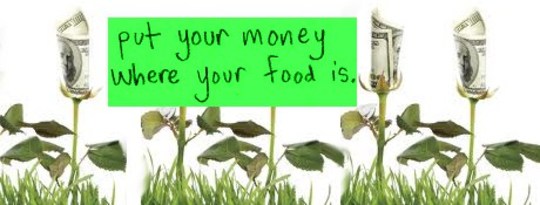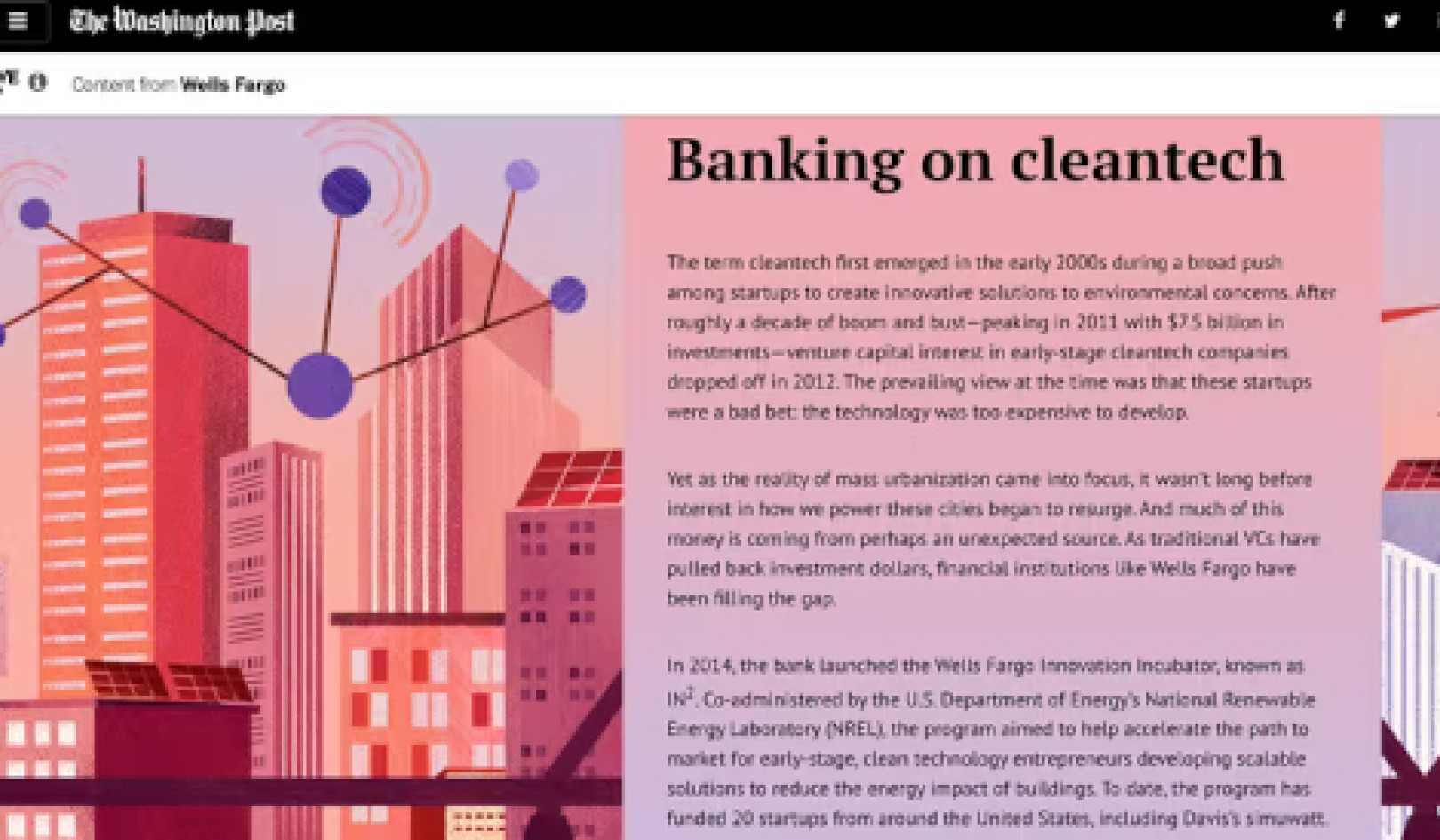
The search for antidotes to Wall Street excesses and global financial uncertainty, and the search for good things to do with our money, take us here: to screened mutual funds and shareholder activism, to credit unions and coops and community banks, to Washington regulators, to impact investing and triple bottom line metrics and microfinance.
And, as of the past few years, courtesy of the emerging Slow Money network around the country, these searches also take us to another place: back to our own neighborhoods where, one loan at a time, individual investors are connecting with local food entrepreneurs and, together, beginning to rebuild local food systems and fix our economy from the ground up.
In a way, nothing could be simpler.
I can still hear Carol Peppe Hewitt saying at a Slow Money national gathering: “It really isn’t complicated. There are local food entrepreneurs who need money and local investors looking for good places to put their money. We just need to connect them.”
The Slow Money Revolution
Carol’s work in North Carolina, doing just that, is a vital part of a process that has facilitated the flow of more than $21 million to 180 small food enterprises around the country since 2010. As of the end of 2012, Slow Money had 17 chapters, including one in France, and six investment clubs. Some 24,000 people had signed the Slow Money Principles. In a way, nothing could be simpler.
Courtesy of the past few years traveling around the country on behalf of Slow Money, I’ve come to believe that there are a few million of us out there who feel, in our bones, just how important and rewarding this “nothing could be simpler” really is. That’s why many observers have called Slow Money a movement, entrepreneur.com listed it as one of the top five trends in finance, and some have called it a revolution.
In the scheme of things, Slow Money numbers are still very small. But they point in a promising direction. Not just in the direction of more. But in the direction of a kind of investing that offers a fundamental alternative to the world of invisible, anonymous financial transactions.
Nurture Capital: A New Economy Based on Preservation & Restoration
Are we witnessing the slowing of a great historical pendulum, on its way, still, towards the peak of an economy based on extraction and consumption, but slowing in preparation for its swing back in the other direction, towards an economy based on preservation and restoration? Perhaps.
This can be a frightening prospect — for what could be more frightening than the wake of a quadrillion McDonalds burgers? Or it can be a hopeful prospect, carrying with it all manner of emergent economic possibilities. Paul Hawken lays out the vision for an “ecology of commerce.” Our friends at BALLE point to the emergence of “local, living economies.” Journalist Amy Cortese and economist Michael Shuman point to locavesting. And lately, there’s been talk of insourcing that comes after decades of irrationally exuberant outsourcing.
Are we witnessing the early stages of the emergence of a nurture capital industry? After venture capital comes nurture capital, concerned less with the pursuit of extraordinary financial returns, courtesy of capital intensive high tech innovation, and concerned more with carrying capacity, sense of place, care of the commons, nonviolence, and ecological, cultural and economic diversity.
Reconnecting with the Places Where We Live
What is at work here is more subtle and more beautiful than merely adding social capital and natural capital to financial capital in order to rejigger our means of accounting.
What do we hear when food entrepreneur Abigail Wilson says that “opening and operating the bakery is, for me, synonymous with going to graduate school”? First, we hear something that would make most professional investors run for the hills. Second, we hear a call to get beyond the false specializations of the global and return to the true generalizations of the local.
We hear a call to reconnect to the places where we live, to take some of our money out of ever-accelerating and increasingly complicated and volatile global markets, and put it to work in things that generate tangible, immediate value to our families, our communities and our bioregions.
And of the risks?
 An economist or a financier would have a field day deconstructing Financing Our Foodshed as a manual of High Risk, Low Return investing. To which I would offer the old aphorism: To a hammer, everything looks like a nail. To an economist, everything looks like an opportunity to Buy Low and Sell High.
An economist or a financier would have a field day deconstructing Financing Our Foodshed as a manual of High Risk, Low Return investing. To which I would offer the old aphorism: To a hammer, everything looks like a nail. To an economist, everything looks like an opportunity to Buy Low and Sell High.
Happily, Lyle Estill is neither an economist nor a financier. He is an entrepreneur, philanthropist and author, and his vision says so much about where we’ve been as a culture (Wall Street) and where we need to go (Main Street). Here’s how he addresses some of the most fundamental fiduciary issues on the Q&A page of Slow Money North Carolina’s website:
How are you qualified to handle my money?
We are not. We have a deep seated belief that we can use capital to increase the resilience of our local economy, and we feel we need to try to do something.... We are not “money managers,” or “loan officers,” or particularly skilled in finance. But we know people. And we have built successful ventures the hard way. We know the local food players in our community. And we understand business in Chatham County. Finally, we have some time on our hands, so we want to give this a try.
Wow. Come on. Let’s all let out a great big old Apple’s-Stock-Price-Isn’t-The-Measure-Of-All-Things “Thank you!”
What Slow Money Supports: A Renewed CommonWealth
Each of the small food businesses that Slow Money investors in North Carolina are supporting is a perfectly, imperfect meeting place of what E. F. Schumacher called “meta-economic,” what Wendell Berry calls “economics for a renewed commonwealth” and “imagination in place,” and what Carol Peppe Hewitt calls “a helluva way to run a produce section.”
Can we find the gumption to carve out a few dollars and some time to support this new economic imagination, this grassroots economic activism? Will it make a difference?
Carol’s experience in North Carolina suggests, laughs, imagines, dares, demonstrates and encourages us that we can and it will.
— Woody Tasch February, 2013
The Slow Money PrinciplesI. We must bring money back down to earth. * What would the world be like if we invested 50% of our assets within 50 miles of where we live? To sign the Slow Money Principles, click here. |
©2013 by Carol Peppe Hewitt. All Rights Reserved.
Reprinted with permission of the publisher,
New Society Publishers, Canada. http://www.newsociety.com
This article was excerpted from the Foreword of the book:
Financing Our Foodshed: Growing Local Food with Slow Money
by Carol Peppe Hewitt.
 In towns and cities across North America, a quiet revolution is underway. Fed up with sending their money off to make a fast buck in faraway markets, people are putting their money to work where they live, in markets they trust and understand — starting with food. Financing Our Foodshed tells the compelling stories of ordinary people doing something extraordinary, and will appeal to anyone who understands the critical importance of sustainably grown local food and resilient local economies, and wants a blueprint to get us there.
In towns and cities across North America, a quiet revolution is underway. Fed up with sending their money off to make a fast buck in faraway markets, people are putting their money to work where they live, in markets they trust and understand — starting with food. Financing Our Foodshed tells the compelling stories of ordinary people doing something extraordinary, and will appeal to anyone who understands the critical importance of sustainably grown local food and resilient local economies, and wants a blueprint to get us there.
Click here for more Info or to Order this book on Amazon
About the Author (of the Foreword)
 Woody Tasch is an experienced venture capital investor and entrepreneur who found a way to marry Slow Food and impact investing. He called the idea “Slow Money” and under his inspirational thought leadership has created a movement and a burgeoning organization of local Slow Money networks throughout the US and beyond. Founder and Chairman of Slow Money, headquartered in Boulder, CO, Woody is also author of Inquiries Into the Nature of Slow Money.
Woody Tasch is an experienced venture capital investor and entrepreneur who found a way to marry Slow Food and impact investing. He called the idea “Slow Money” and under his inspirational thought leadership has created a movement and a burgeoning organization of local Slow Money networks throughout the US and beyond. Founder and Chairman of Slow Money, headquartered in Boulder, CO, Woody is also author of Inquiries Into the Nature of Slow Money.
About the Author (of the book)
 Carol Peppe Hewitt is a business owner, social entrepreneur and life-long activist. She is cofounder of Slow Money NC which works to finance North Carolina's sustainable food and farming economy by connecting individuals committed to building local food systems with entrepreneurs who have compelling needs for capital. Growing up in rural Northwest Connecticut, Carol watched as working farms disappeared one by one. She now works to change that trend, guiding patient capital to small-scale farmers and businesses in North Carolina.
Carol Peppe Hewitt is a business owner, social entrepreneur and life-long activist. She is cofounder of Slow Money NC which works to finance North Carolina's sustainable food and farming economy by connecting individuals committed to building local food systems with entrepreneurs who have compelling needs for capital. Growing up in rural Northwest Connecticut, Carol watched as working farms disappeared one by one. She now works to change that trend, guiding patient capital to small-scale farmers and businesses in North Carolina.























